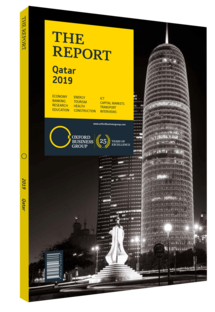Qatar turning to preventative medicine to address modern health needs
Qatar has launched the second tier of its National Health Strategy (NHS) to deliver “better health, better care and better value” as part of Qatar National Vision 2030 (QNV 2030). While the first NHS 2011-16 emphasised an acute, curative, hospital-based approach and included important foundational work, the NHS 2018-22 phase introduces a more preventive and community-based model aimed at tackling rising rates of non-communicable diseases (NCDs), such as cardiovascular disease and diabetes.
Rising Rates
Like a growing number of countries across the world, Qatar is facing an increase in the prevalence of lifestyle-related diseases. Indeed according to the Ministry of Public Health more than 70.1% of Qatari adults are classified as overweight or obese; 43.9% of the adult population was reported as having low or no activity levels; and 69% of mortalities occur from chronic conditions, particularly cardiovascular disease (24%), cancer (18%) and diabetes (7%). This is compounded by a modern diet and high incidences of tobacco usage, all of which place considerable strain on the national health care system.
To address these challenges, the NHS 2018-22 will introduce a new approach by focusing on health promotion and holistic health care. “In line with NHS goals, there has been a change in perspective towards focusing on preventive measures to reduce long term health costs,” Abdulla Al Hamaq, executive director at the Qatar Diabetes Association, told OBG.
Narrowing the Focus
The government has categorised the population into seven risk-specific population groups focusing on children and adolescents, women and neonatal care, employees, people with special needs, people with multiple chronic conditions, people with mental health conditions and the elderly. Grouping populations will allow health providers to improve the health of the entire population by providing specialist care to at-risk groups thereby reducing inequality in service provision, as well as by identifying specific issues prevalent in certain populations and catering to the needs of that demographic The NHS 2018-22 also prioritised five areas of focus. These will involve integrating high-quality care and service delivery; enhancing health promotion and disease prevention; enhancing health protection; integrating health care into all policies; and implementing an effective governing system. Meeting these goals will require significant time and resource commitments, as well as a collaborative approach between health care organisations, businesses, government agencies, civil society, the media and citizens themselves.
Opportunities
Going forward, the country’s health care expenditure is expected to rise by 2.2% per year to $6.6bn in 2022. However, as spending priorities shift to preparations for hosting the 2022 FIFA World Cup, Qatar’s authorities are intent on courting private sector involvement in the health care sector to help fill gaps in construction and provision. Many global and regional investors are already active in Qatar’s health sector, with more international and local players also preparing to take advantage of the favourable climate. For example, Qatar Foundation-funded Sidra Medical and Research Centre just launched the Sidra Medicine Simulation Centre in July 2018. On the flip side, private Qatari organisations have been involved in operations outside of the country. In September 2018 Qatar Red Crescent Society signed a memorandum of understanding with the Indian Red Cross Society, and the International Federation of the Red Cross and Red Crescent Societies to support the flood-affected communities in Kerala, India, under a budget of $5m.
Private providers are often better able to fill in the gaps where public care lacks expertise, such as in the treatment of cancer. This sometimes leads patients to seek specialised treatment in Europe, the US or India. “Many Qataris believe treatment abroad is superior to that at home,” Al Hamaq told OBG. “However, it is necessary that the government try to change this narrative.”
You have reached the limit of premium articles you can view for free.
Choose from the options below to purchase print or digital editions of our Reports. You can also purchase a website subscription giving you unlimited access to all of our Reports online for 12 months.
If you have already purchased this Report or have a website subscription, please login to continue.

